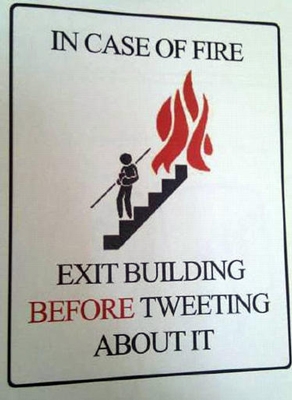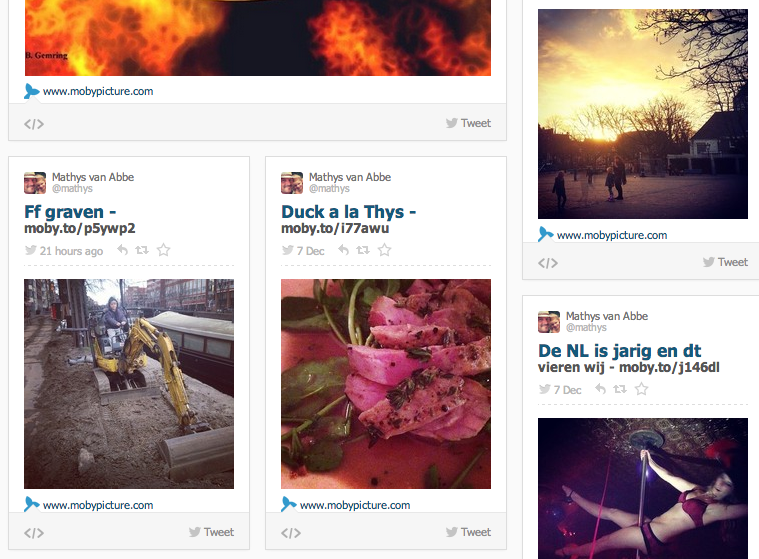How do you find the right media mix to tell your story?

9 December 2013
Blogs
[ it will take you approximately 12 minutes to read and of course share this blog post, if your concentration is up to the task that is. ]
There are 1440 minutes in a day.
The average person should spend around 31% of those minutes sleeping.
According to several studies (emarketer 1, emarketer 2), of the remaining 1000 minutes, between 20% to 40% (more than 6 hours hours a day!) is spent in front of screens, gaming, texting, browsing, social media, email.
The (social media) companies and publishers are fighting for the attention span of 180-360 minutes of individual users.
It is important to think about how much time is needed to consume a unit of the used media. (CPU = consumption time per unit)
There are 1440 minutes in a day.
The average person should spend around 31% of those minutes sleeping.
According to several studies (emarketer 1, emarketer 2), of the remaining 1000 minutes, between 20% to 40% (more than 6 hours hours a day!) is spent in front of screens, gaming, texting, browsing, social media, email.
How are these minutes spent? Introducing CPU!
The (social media) companies and publishers are fighting for the attention span of 180-360 minutes of individual users.
It is important to think about how much time is needed to consume a unit of the used media. (CPU = consumption time per unit)

Telling stories online comes in different shapes
The different social platforms use expression technologies in different shapes, basically:
1. Tweets or Pictures/Instagrams – CPU = 5 secs
2. Tumblr / Facebook updates – CPU = 10 / 30 secs
3. Short format video – CPU = 1 – 6 mins
4. Blogposts – CPU = 3 – 20 mins
5. Long format video – CPU = 6 – 30 mins
The success of the first two is quite evident. The speed in which you can consume tweets or Instagram posts is very fast so you can easily spend some lost time on it. (When you’re waiting for the bus or when you’re walking the streets.)

Blogging and video of course are more valuable in terms of lasting impression or for forming opinions, but they also need more time to consume. Therefore the decision for readers/viewers to invest time lies in the presumption of the needed time and of course a nowadays scarce good called; concentration or focus. The management of this presumption is something you can use to your benefits;
The fast growing Medium is pretty aware of how the CPU works and indicates for each post how much time the user will have to spend to read it beforehand. It probably calculates the amount of words and if there is a video included in the post, Medium adds the minutes from the video to make an accurate prognosis. (see below)
The fast growing Medium is pretty aware of how the CPU works and indicates for each post how much time the user will have to spend to read it beforehand. It probably calculates the amount of words and if there is a video included in the post, Medium adds the minutes from the video to make an accurate prognosis. (see below)

Upworthy is also doing smart things. When posting a video they give you some guidance, so you know what to look out for. This helps your anticipation and might encourage you to watch the whole thing.

Upworthy explaining the video
On The Daily Beast, they use another smart feature on the right hand side of the webpage (web version only).
On The Daily Beast, they use another smart feature on the right hand side of the webpage (web version only).

The ‘Read This’-box shows how far you are with reading the blogpost. So instead of looking at the scrollbar and figuring it out for yourself, the site indicates your progress.
Platforms like Rebelmouse and services like Flipboard make it easier for users to view previews and show social updates in a richer way. They want the users to consume the content on their platforms because they think they can do a better job than the social networks. Twitter, Google+, LinkedIn and FB try to counter this with their content preview features, trying to keep the users as long as possible on the sites.
Platforms like Rebelmouse and services like Flipboard make it easier for users to view previews and show social updates in a richer way. They want the users to consume the content on their platforms because they think they can do a better job than the social networks. Twitter, Google+, LinkedIn and FB try to counter this with their content preview features, trying to keep the users as long as possible on the sites.

Rebelm ouse view
Of course some content is harder to create than others. Video is expensive, blogging takes research. Scoring views is easy with Instagrams, tweets and small format video (Vine).
Being active on all these different platforms to communicate with your target audience is, besides time consuming, dispersed and does not provide the cross selling of your content and stories. With this we mean the way a shared picture can draw in traffic to your self-owned media environment where the viewer can find related other form content.
How do you find the right mix and outlets for your story?
Of course some content is harder to create than others. Video is expensive, blogging takes research. Scoring views is easy with Instagrams, tweets and small format video (Vine).
Being active on all these different platforms to communicate with your target audience is, besides time consuming, dispersed and does not provide the cross selling of your content and stories. With this we mean the way a shared picture can draw in traffic to your self-owned media environment where the viewer can find related other form content.
Which brings me to the marketing part of this blogpost
Let's create something beautiful
Quickly find out how we can strengthen your online presence and activities.

